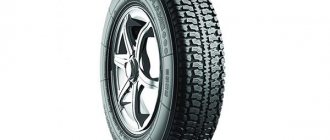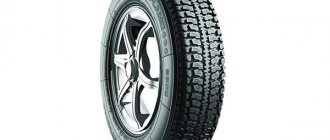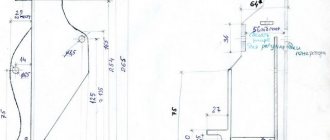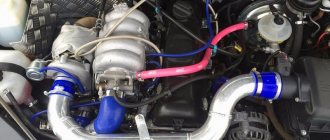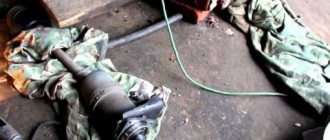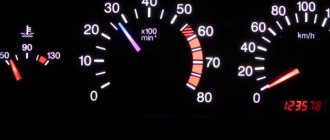I want a 30% increase or why install a turbine on the Niva. Already from the first lines it is clear that today we will talk about a car from a domestic manufacturer together with American developers. At one time, the car was called VAZ 2123
and was produced for a long time, which made it obsolete, thanks to a timely cash injection from the Americans, the brand managed not only to survive, but also to develop new versions that are still popular today.
The car is practical, hardy off-road, fortunately we have a lot of it. The Niva has become a favorite among the fleets of mining and processing plants, where the car is used to move around dumps and quarries, which is not so easy, especially in winter. But, nevertheless, she copes with her responsibilities 90%.
Turbine 0.5 bar 120 hp 205 Nm
Installation of a turbine (turbocharging) 0.5 bar on Niva, Chevrolet Niva, Lada Niva Legend and Lada Niva Travel with mechanical and electronic throttle.
Increases the power and torque of a standard engine without reducing its service life, thanks to the correct configuration of the controller firmware (ECU, brains). Increase in power and torque - 50%. Dyno measurement chart at the top of the page. The same car was measured: with a turbine (red lines) and without it (black).
Look at the QUESTIONS and ANSWERS about our turbo engines. You can BUY a 0.5 bar TURBOKIT from us for self-installation, call +7 (968) 394-8740 Mikhail . Here are the INSTALLATION INSTRUCTIONS. VIDEO INSTRUCTIONS for installation are at the bottom of the page. Installation of a turbine is only possible on INJECTION vehicles.
You can order a TEST DRIVE of the Niva turbo 0.5 bar, call: +7 (495) 725-7899 - Niva777 EAST, or +7 (495) 725-7876 - Niva777 SOUTH.
Important! It is IMPOSSIBLE to make power more than 120 hp in this configuration . Neither 130 hp, nor 150 hp. It will be necessary to install an intercooler, an alternative ECU, other injectors and a fuel pump, replacing the mass flow sensor with a DBP, in general the budget will be the same as that of an uncompressed engine, 1 bar.
Device:
- Turbine Garrett GT17 (Honeywell, Europe).
- Injectors - Siemens Deka ZMZ.
- Intercooler is not provided.
- ECU - factory BOSCH 7.9.7+, 17.9.7, 17.9.71.
- Firmware - Euro-2 turbo firmware from Niva777 based on the factory one.
- Online setup is not required.
- The catalyst is removed.
- Niva 21214-31 with and without air conditioning - 104,000 rubles. — more details
- Chevrolet Niva 2123 without air conditioning - 104,000 rubles. — more details
- Chevrolet Niva 2123 with air conditioning - 110,500 rubles. — more details
Operating principle and ways to increase power
Installing a turbine on a Niva is one of the legal options to increase the power rating. Today it can be increased in the following ways:
- Change towards increasing engine displacement;
- Increase in crankshaft rotation speed.
Both methods are neither simple nor easy.
, since it will be necessary to temporarily dismantle the engine and manipulate it. But mechanical engineering experts have developed another method - increasing the mixture in the combustion chamber.
Despite the positive aspects, it is necessary to treat this tuning with all responsibility, since you will have to supply the car only with fuel with a high octane number and undergo timely maintenance.
Power increase scheme:
- Installation of a compressor, which is driven by a crankshaft pulley;
- Installation of a turbine, if a diesel option is available. * see the article “Which is better, a compressor or a turbine”
With high-quality installation, the effect is immediately noticeable:
the engine runs quieter, there is no detonation, the toxicity level is much lower than normal. The compressor will reduce your acceleration by 5.0 seconds, but there will be a jerk from the first meters, unlike a turbine with its turbo lags. After you turn off the engine, the turbine will still continue to rotate for some time, and the oil temperature heats up under the influence of heat transfer. In this way, the liquid quickly loses its properties.
Chevrolet Niva 1.7 Turbo › Logbook › Turbine installation - Part one. Preparation, selection of Turbo.
And so, let's go. What do we want to get in the end? (What tasks did I set for myself when choosing a turbine and its body kit) 1. The most important thing is to maintain the reliability of the car. The runs are sometimes long and mostly aimed at getting away from civilization.) I have a main rule (Repairs need to be done at home, not just anywhere). In connection with this, only the original turbocharger was considered, although its price is twice, and sometimes even 3 times more expensive than its Chinese counterpart, but this is definitely not worth saving on. When buying a Chinese Turbo, you ALWAYS play roulette, and not 50 to 50, but about 80 to 20, not in your favor. 2. Maintain traction from the bottom. In general, the Nivovsky engine is more grassroots in its design, so there is only one task here: not to lose its grassroots qualities. 3. Significantly increase torque at medium and high speeds. This is very important on the highway, especially with an overloaded car and a trailer behind. 4. The power added by the turbocharger should be available almost immediately, and not at 4000 rpm. This is important off-road, where it is not always correct to turn the engine, but it is better to push it, knowing that there is always a reserve of power. 5. Bypass the turbo lag as much as possible. This applies more to urban and off-road use. 6. Do everything as cost-effectively and reliably as possible. 7. There must be an intercooler, and it must be standard. An intercooler is needed to inflate more pressure and not fry the car. 8. Less collective farm, more beauty. (TurboTAZ should be pleasing to the eye.) Based on these thoughts, I considered 2 options for turbines, very similar in characteristics. 1. GARRETT 1752-5005s 2. TD 04 I don’t remember the numbers further.
What are the pros and cons of these Snails. 1. With high-quality oil and normal cooling, Garrett’s stated service life is approximately 200,000 km. early boost In third gear, the turbine comes out at approximately 2800-3000 rpm) 3. Small dimensions. 4. Water cooling. The only downside is that it starts to deflate somewhere after 6000 rpm. But this is not critical for me, I don’t take part in drag races, in general I think that the car will live longer if you don’t turn it over 6500. I calmly punish Range Rovers anyway.
DIY installation
Installing a turbo kit on a Chevy Niva requires certain skills in car repair , so it is recommended only for experienced car owners. On the other hand, installation in a car service can cost several tens of thousands of rubles. Therefore, to save money, it makes sense to do all the work yourself.
The installation sequence of the turbo kit on a Chevrolet Niva is as follows:
- First, remove the protective casing from the engine. Afterwards, you need to make sure that all the intake and exhaust systems of the power unit are not damaged or contaminated with carbon deposits, waste oil or foreign objects.
- If necessary, the oil, oil and air filters are simultaneously replaced according to the manufacturer's recommendations.
- On early Chevrolet Niva models, installing a turbocharger will require moving the fuel filter.
- Next, the exhaust pipe of the muffler is dismantled.
- The engine sump is dismantled, a fitting for draining oil from the turbocharger is installed in it, but not tightened. Then the pallet is mounted back.
- The washer reservoir and adsorber are being transferred.
- An adapter is installed on the exhaust manifold, and heat-reflecting screens are also mounted. All parts are included in the turbo kit.
- Preliminary installation of a new intake pipe is carried out without securing it.
- Next, a turbocharger is installed on the exhaust manifold along with pipes for supplying and draining oil and coolant. The turbocharger must be filled with fresh engine oil through the supply hole.
- The exhaust pipe of the muffler is completely secured.
- Then you should move the inlet of the crankcase ventilation system and install air ducts from the air filter to the turbocharger. After this, the compressed air supply duct and the anti-surge valve line are installed.
- Then you need to turn off the fuel supply and turn the engine starter until oil appears at the location of the supply fitting. After this, tighten the fitting. You should crank the starter of the power unit again until the oil pressure indicator on the instrument panel goes out.
- The motor protective casing is installed.
- Then start the engine and let it idle for 10-20 minutes. This way you can ensure that there are no leaks and that the turbocharger is securely mounted.
Attention! When installing a turbocharger, the use of adhesive-sealant is strictly prohibited.
Complete installation of a turbo kit does not mean that the car can no longer be used . Additionally, you will need to dismantle and reflash the electronic engine control unit (ECU).
Results
The domestic automaker has released an Urban version, which is not significantly different from the regular one. In order for the car to have high cross-country ability, the suspension, chassis and engine compartment devices are being improved. Serious investments are required when preparing a vehicle for off-road use.
If we consider the modernization of an internal combustion engine, we note that the work can cost a significant amount. That is why many are considering replacing the standard engine with another, more powerful and reliable one. It is worth considering that an increase in engine power causes an increase in the load placed on other systems, for example, cooling. Therefore, when increasing power, attention is paid to improving other systems.
Source
Gasoline engine on Chevrolet Niva
Not only imported engines are suitable for the Niva. Domestic production is also quite suitable. For example, a sixteen-valve power unit from VAZ can be easily installed without modification. It has lower fuel consumption than diesel engines and more power.
Car owners of such an engine are advised to change the camshafts for traction. There is no need to replace the gearbox. Engines from foreign cars require improvement. The next block will show which gasoline power units are suitable for swapping a Niva engine.
With modification
Niva is suitable for an engine from a BMW M42, M43 or Toyota, but gasoline. You will need to buy some parts for the swap, but changing the engine to one of these will give results that will surprise you. The car will become more maneuverable and will respond better to the accelerator pedal.
The fuel consumption of these power units is low. Therefore, you won’t have to spend money on them if you only follow the technical inspection rules and visit service centers on time.
No modifications
Many engines that are suitable without modifications for the Chevrolet Niva do not differ from the power unit that left the factory with the vehicle. Therefore, experienced mechanics advise installing an additional turbine if you want to increase engine power. The choice of gasoline engines is much higher than that of diesel engines.
A budget engine that will successfully fit into a Chevrolet Niva is Toyota’s 3S. There is no need to make major changes when installing this power unit. You can install a transmission from this car and a transfer case. Then Niva will become more powerful.
Attention! When swapping a power unit, do not forget that the controllability of the car changes along with the engine. For example, if a more powerful motor is installed, then controllability deteriorates somewhat.
PRO 1 BAR
Question: What is the fuel consumption of such an engine?
Answer: With quiet driving - 14-16 liters per 100 km. If you constantly drive “sneaker to the floor” - 20 liters or more.
Question: What is the reliability of the motor with such an excess? What is its resource?
Answer: Before putting this configuration on sale, we conducted endurance tests. The test engine traveled 10,000 km in extreme mode: constant starting with slipping, twisting to the cut-off, long driving on the highway at high speed at about 5,000 rpm, acceleration in 3rd gear from idle to the cut-off, etc. These 10,000km are equivalent to 50,000-60,000km of normal use. Then we disassembled the motor. There were no signs of wear on the parts at all, the insides looked like an ordinary naturally-aspirated engine that “grandfather drove to the dacha.”
Question: is the turbine suitable for shit climbing? How does it behave in the mud? Is there any risk of water getting in or does the motor overheat?
Answer: It’s good, I tried it personally. So: on the second lowered, the car simply flies through the mud, due to the frantic turning of the wheels, the tires self-clean, and the stock Shniva on the BFG MT 215/75R15 flies where more serious SUVs land. The engine temperature NEVER rose above 99 degrees.
Question: How do gearboxes, gearboxes, axles, drives and axle shafts carry such power and torque? Is the transmission becoming a consumable item?
Answer: The weakest point is the checkpoint. The torque that our engine can produce is significantly higher than the calculated one. If you drive off with slippage all the time, “tearing” the car, the gearbox will not last long. If you apply power smoothly, without forcing the car unnecessarily, everything will be fine with the gearbox. All other transmission units tolerate the increased load without problems. This is not a theory, this was shown by the test operation described above.
Question: What is the maximum speed of the Niva with this engine?
Answer: We did not measure the maximum speed. 180 km/h goes exactly, while the throttle is only open 50-60%. It’s a little scary; at such speeds, the suspension needs to be seriously upgraded for the car to maintain controllability.
Another problem: engine speed at 180 km/h is more than 5,000. The stock gearbox is too short for this engine. It can be “extended” by installing larger wheels, but then the power will drop proportionally in all modes. If on boost it’s not so bad, then in atmospheric mode (until the turbine is inflated), it will be rotten. We are looking for a solution.
Question: is it possible to combine the construction of a turbo engine with an increase in its volume, modification of the cylinder head, etc.
Answer: Of course you can. But this will greatly increase the already high cost. If the increase in displacement results in a slight increase in power in atmospheric mode (this is, of course, a plus), then it is difficult to feel the increase from a modified cylinder head without replacing the camshaft on the top one. And if you install a “top” shaft, the lows will be lost, which is unacceptable for an SUV. Dead end. Of course, it’s up to you to decide, but believe me: what you get by simply betting 1 bar is enough. You can just come and try.
Oil pump work
Lubricant supplied through the oil pump extends engine life. To improve the performance of the oil pump when tuning the Niva engine, you need to take another pump and cut off part of the housing with the parting plane from it. The thickness of this “pancake” should be about 11 cm. Using milling, cut off the excess and leave a thickness of 10 mm.
Next, do the following to remove chamfers on the edges of the teeth:
- We compress, that is, remove, the drive gears.
- We trim one of the gears by 0.75 mm on each side.
- We cut the second gear to 11.5 mm (after trimming).
- We repeat the operation with the remaining gears (driven).
Let's start working on the body. To do this we do the following:
- We release the driven gear axis from the housing.
- We form a longer axis from the drive roller.
- We insert the resulting axle into the body.
- We press the narrow gear onto the second drive shaft.
- Press on the wide gear.
- We fix the wide driven gear in the housing.
- We install a narrow gear into the housing.
This sequence will prevent the gears from turning relative to each other. You can also improve the oil receiver of the Vase by cutting it a centimeter from the bottom. After this, we adjust the end gap and connect the entire structure with bolts.
Niva with turbine
The most common way to add power to an engine is to install a turbine or compressor, which will significantly increase the volume of air entering the power plant.
Installing a turbine is not a complex tuning solution, since the turbine itself has a fairly simple structure. The supercharger and turbine impellers are mounted on the same shaft, and the exhaust gases are the drive. Thus, we can observe the most efficient use of energy from combustion products in a car. The absence of interaction between the crankshaft and the turbine shaft also increases the efficiency of the power plant.
In general, the Niva engine can and should be modified, and then your car will become more powerful and last much longer. This is what we should strive for!
Price issue
All sorts of specialized tuning studios and shops offer to purchase turbo kits and auto parts for the Chevrolet Niva. Prices for such equipment depend on the manufacturer: Chinese products are quite inexpensive, while the branded Garret GT17 turbine costs an order of magnitude more.
For example, purchasing a turbine from the companies Dias-Service or Turbo Engineering with subsequent installation will cost the owner of a Niva no less than 80,000 rubles. However, the quality of the “original” is incomparably higher, which guarantees stable operation of the supercharger, as well as reliable engine operation.
Technical characteristics of Niva with carburetor
At the very beginning of production, the engine for the Niva was the one that was installed on the classic Zhiguli. The engine remained the same, but the volume of the combustion chamber was increased.
The first Soviet SUV received a 2121 engine, the displacement of which was 1580 cubic centimeters. This engine could produce up to 80 horsepower. The car accelerated from 0 to 100 kilometers per hour in 21 seconds, but fuel consumption was indecently high. In the passport data this figure was 13.1 liters, but reality indicated that it was greatly underestimated.
A few years later, the car began to be equipped with a more modern engine. The new engine bore the index 21213. Its displacement was 1690 cubic centimeters and its power was 83 horsepower. Acceleration to 100 kilometers per hour decreased to 18 seconds.
Mechanical modification of the Niva engine
For a 4x4 class car, which is the Niva, mechanical tuning is mandatory. The reason is the low performance of standard components in terms of geometry and wear resistance.
Engine tuning should begin with improving the carburetor. Here you should replace:
- Jets. Instead of 1 camera (t110 in ZD150), 2 cameras are installed (t125 in ZD135);
- Accelerator pump nozzle.
Be sure to clean the carburetor from carbon deposits. This can be done manually using a rag, gasoline and physical force, high-pressure washers designed for home car washing or specialized baths for cleaning parts. All of the above will allow you to debug the fuel supply mechanism to the timing belt (gas distribution mechanism).
Mechanical intervention in the injector is unacceptable; its adjustment is carried out using special equipment and software.
The second stage is tuning the timing belt and other mechanical components of the engine. You should immediately start correcting the geometry of the power unit. To do this, it is necessary to increase the diameter of the valves. It should be noted that sealing them increases motor power by up to 10%.
The same operation is carried out with the pusher wells of the intake and exhaust channels. This entails replacing the pusher itself. It is recommended that its diameter be at least 1 mm. This upgrade is very important for the 4x4 layout. The next step is to replace the injectors and control unit.
You can increase engine power by replacing the standard crankshaft with an advanced modification, as well as installing new piston rings. Installing a new crankshaft will give increased stroke to the pistons. In this case, they must be bored. Although many experts argue that this significantly increases fuel consumption, this operation cannot be avoided when replacing the crankshaft. All of the above operations also add power to the motor.
Content
When looking for a cross-country vehicle that can be tuned, you should pay attention to the Niva Urban. This model is not significantly different from the regular version of the Niva; the automaker has made minor improvements. Today, tuning of the Niva Urban 4x4 , since this car is a good base: a small base, high ground clearance, large wheels and much more. Let's take a closer look at all the features of tuning this car.
Features of work to improve geometry
The low wear resistance and efficiency of an SUV engine of Russian origin determines that it is practically impossible to do without mechanical modifications. Many people call such work a change in geometry.
The internal combustion engine installed on the vehicle in question can have many systems modified. Experts recommend starting with upgrading the carburetor. This is due to the fact that due to the use of imperfect production technology, its efficiency is very low. Modernization is carried out as follows:
- To begin with, it is recommended to replace the nozzle. The factory version is installed with 1 cam, but should be installed with 2 cam.
- The pump accelerator should be updated.
- All sharp corners that could cause turbulence in the air flow are removed.
- Some craftsmen also clean accessible surfaces, reducing their roughness. Due to this, the efficiency indicator is significantly reduced.
Insert: Important: It is important to clean the carburetor structure from carbon deposits and dirt. To do this, use gasoline or a rag. If the dirt has become too deeply embedded in the surface, you can use special cleaning products.
Experts' opinion
Dmitriy. Considering the Niva Urban, we immediately note that the car is not much different from its predecessor. Therefore, a lot of modifications will have to be made. First, I recommend paying attention to the main power units, and only then installing additional accessories as needed.
Vitaly. If many Urban people make a cross-country SUV, then I decided to make a sports car out of it. I lowered the suspension, installed a new body kit, removed everything unnecessary - it turned out very attractive. However, the Niva is not suitable for the track, and the car is only suitable for a temporary trip.
Maksim. First, I improved the technical part: the engine, new consumables, changed the suspension, and so on. The next step was to improve the exterior and install special accessories. The biggest concern was the interior tuning. The result is a cross-country vehicle with a comfortable interior and good traction.
Vitya. Urban arrived in relatively good condition. However, quite a lot of modifications had to be made. An example is that the standard motor has relatively low power. With its modification, the power can be increased by about 40%. However, it is quite difficult to improve the reliability of the design.
